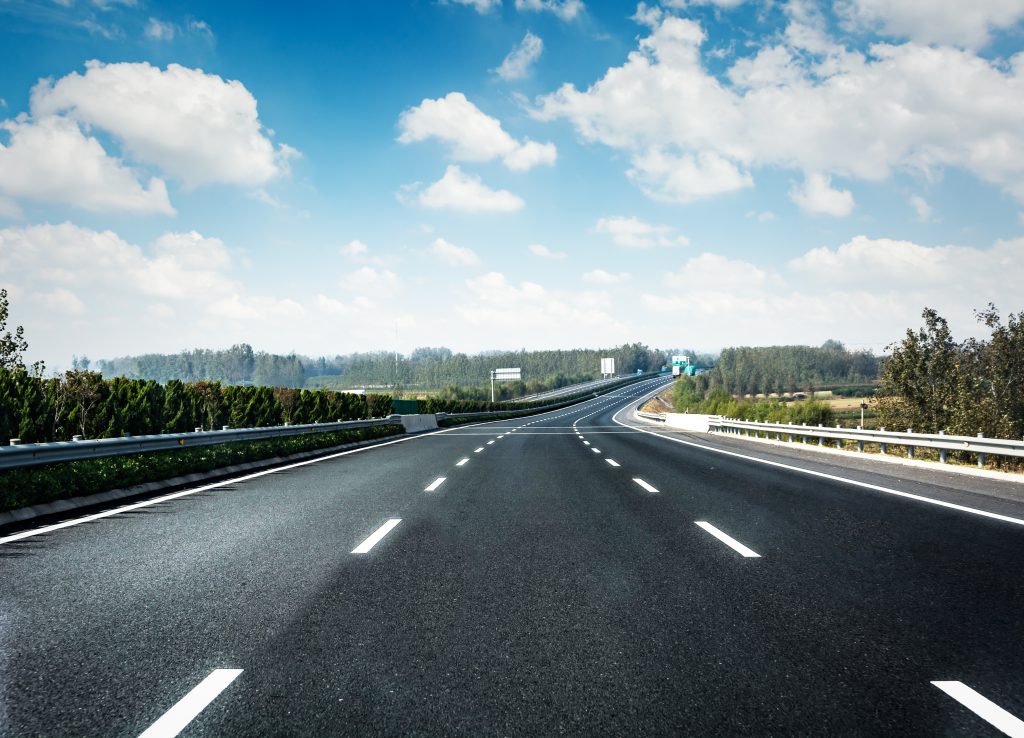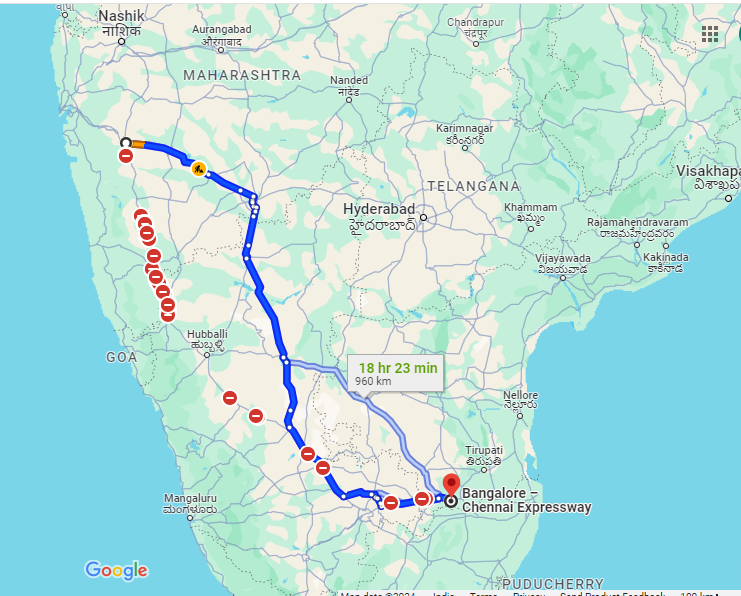The Pune-Bengaluru Expressway is a game-changer in the making for India’s economic landscape. This ambitious infrastructure project promises to revolutionize connectivity between two of the country’s most prominent IT hubs: Pune, the “Queen of the Deccan,” and Bengaluru, the “Silicon Valley of India.”
Key Facts: A High-Speed Corridor:
Distance: The expressway will span a colossal 700 kilometers, significantly reducing the travel distance between the two cities by an estimated 95 kilometers.
Lanes: Imagine an eight-lane behemoth! This access-controlled expressway will allow for smooth traffic flow at high speeds.
Cost: The project carries a hefty price tag of approximately ₹40,000 crores (US$50 billion), reflecting its grand scale.
Timeline: Mark your calendars for 2028! The expressway is slated for completion by then, ushering in a new era of connectivity.
Project Type: A “greenfield expressway,” this means it will be a brand new construction, bypassing existing roads and minimizing environmental impact through careful planning.
Route Map: Charting the Course
The expressway will snake its way through the vibrant landscapes of Maharashtra and Karnataka, connecting major cities and towns. Here’s a glimpse of its tentative route:
Maharashtra: Starting from the Pune Ring Road project, it will traverse through Satara and Sangli districts.
Karnataka: Belagavi (Belgaum), Dharwad, Hubli, Davanagere, and Tumakuru are some of the key Karnataka destinations it will touch before reaching Bengaluru.

Expected Benefits:
The Pune-Bengaluru Expressway isn’t just about cutting travel time. It’s poised to trigger a domino effect of positive changes:
Booming Economies: Faster and smoother movement of goods and services will significantly boost trade between the two cities and the surrounding regions. This will fuel economic growth and create new business opportunities.
Enhanced Logistics: The expressway will be a boon for the logistics sector, enabling faster and more efficient transportation of cargo. This will benefit businesses of all sizes and contribute to a more streamlined supply chain.
Tourism Boost: Reduced travel times will entice tourists to explore both Pune and Bengaluru with greater ease. This will lead to increased tourism revenue and a revitalization of the travel and hospitality sectors.
Urban Development: The expressway has the potential to spur urban development along its route. New commercial centers, industrial hubs, and residential areas could emerge, creating job opportunities and attracting investments.
Infrastructure: Building for the Future
The Pune-Bengaluru Expressway is an engineering marvel in the making. Here’s a peek at the kind of infrastructure we can expect:
Pune Bangalore Expressway route map:

Source: Google Maps
High-Speed Design:
The expressway will be designed to accommodate speeds of up to 120 kilometers per hour, significantly reducing travel time between the two cities.
Safety First: Safety will be paramount. The expressway will incorporate advanced safety features like multi-layered asphalt, crash barriers, and clearly marked lanes.
Smart Infrastructure: The expressway might integrate Intelligent Transportation Systems (ITS) for better traffic management and real-time information for commuters.
Sustainability Focus: The project aims to minimize its environmental impact. Techniques like tree plantation and ecological restoration could be employed to offset the environmental cost of construction.
The Pune-Bengaluru Expressway is more than just a road; it’s a symbol of India’s progress and ambition. It represents the nation’s commitment to building a robust infrastructure network that will connect its economic powerhouses and propel the country towards a brighter future.
Crossings:
The expressway won’t have traditional intersections with traffic lights. Instead, it will feature a network of:
Interchanges: These are multi-level junctions that allow traffic to flow seamlessly between the expressway and other roads. The exact number of interchanges is yet to be finalized, but estimates suggest around 22.
Flyovers: These bridges will carry expressway traffic over existing roads and railways, eliminating traffic congestion at ground level. The project anticipates roughly 55 flyovers.
Road Over Bridges (ROBs): Similar to flyovers, ROBs will elevate local roads over the expressway, ensuring smooth traffic flow for both local and expressway users. There are plans for around 6 ROBs.
Tenacious Rivers:
The expressway, stretching over 700 kilometers, will encounter several rivers on its path. Here’s a list of these important waterways:
- Nira River: Originating in the Western Ghats, it flows through Maharashtra before meeting the Krishna River.
- Yerala River: A tributary of the Bhima River, it also originates in the Western Ghats and flows through Maharashtra.
- Chand Nadi: A lesser-known river, details about its specific location are yet to be confirmed.
- Agrani River: Another tributary of the Krishna River, it meanders through Maharashtra and Karnataka.
- Krishna River: One of India’s major rivers, the Krishna will be a significant crossing point for the expressway.
- Ghataprabha River: A tributary of the Krishna River, it flows entirely within Karnataka.
- Malaprabha River: Another major tributary of the Krishna River, the Malaprabha also flows through Karnataka.
- Tungabhadra River: Formed by the confluence of the Tunga and Bhadra rivers, it is a crucial river system in South India.
- Chikka Hagari River: A tributary of the Tungabhadra River, its specific location along the expressway is yet to be determined. 1 10. Vedavati River: A tributary of the Krishna River, it flows through Karnataka and Andhra Pradesh.
Beyond the Rivers: A Look at the Expressway’s Specs
The Pune-Bangalore Expressway boasts impressive features designed for speed and efficiency:
- Eight Lanes: Imagine a smooth eight-lane highway facilitating swift movement of traffic.
- High Speeds: Get ready to cruise at speeds of up to 120 kilometers per hour, significantly reducing travel time. making convenient for everyone
- Greenfield Project: This brand new construction avoids existing roads, minimizing environmental impact.
- Access Control: No more traffic lights or merging hassles; the expressway will be an access-controlled corridor.
Latest Updates (May 2024):
- The project is currently in the planning and land acquisition phase. The National Highways Authority of India (NHAI) is finalizing the route alignment and acquiring land.
- Major construction updates might not be available yet, with completion expected by 2028.
Latest News and Updates (May 2024):
As of May 2024, the expressway is in the planning and land acquisition stage. The National Highways Authority of India (NHAI) is finalizing the route alignment and acquiring land from private owners and government agencies.
There haven’t been any major recent news updates on the project. However, an article from January 2024 on Team-BHP, an Indian automotive forum, highlighted public anticipation for the project’s kickoff [Team-BHP Source]. This suggests continued public interest in the expressway’s progress.
Frequently Asked Questions:
A: The expressway will cut across ten rivers on its journey, including major ones like the Krishna and Tungabhadra.
A: The expressway promises to:
Reduce travel time between Pune and Bangalore by up to 95 kilometers.
Boost trade and economic activity between the two cities and surrounding regions.
Improve logistics efficiency by enabling faster cargo movement.
A: The project is still in its early stages. The National Highways Authority of India (NHAI) is finalizing the route and acquiring land from private owners and government agencies. Major construction is likely to begin in the coming years.
A: The expressway is designed for high speeds of up to 120 kilometers per hour, significantly reducing travel time between the two cities. and make it more convenient and accessible for all
Suggested Articles:
Yamuna Expressway -Taj Expressway: Route Map, and Guide 2024
Hyderabad-Raipur Expressway: Complete Project Guide 2024
Dwarka Expressway: Route, Toll charges & attractive for real estate investment





































